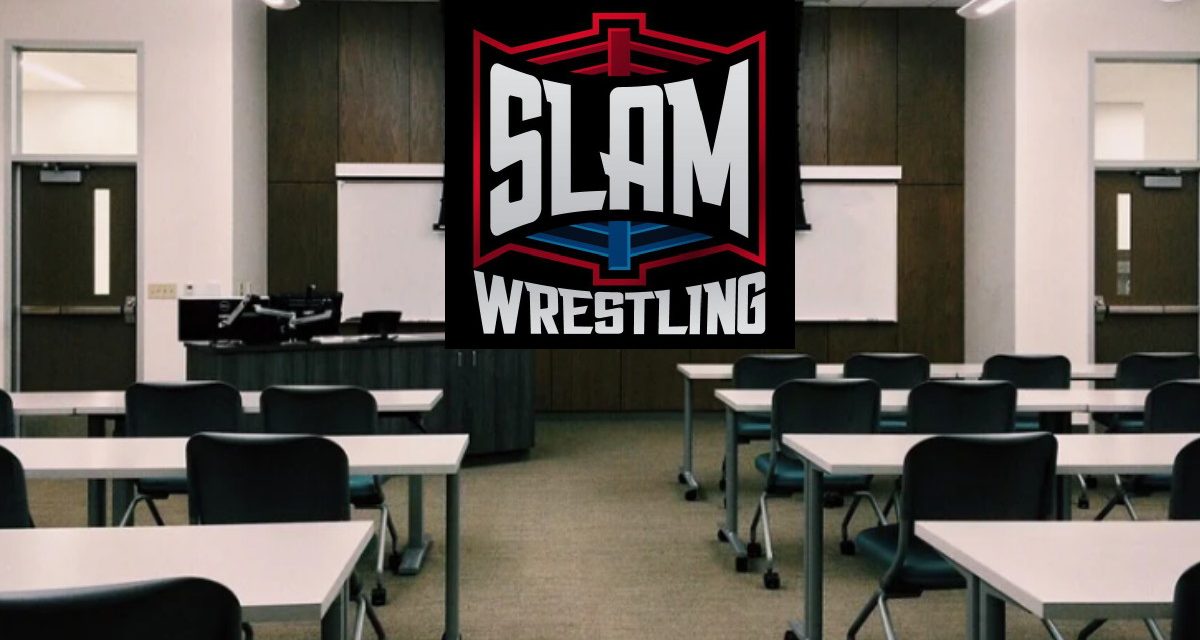School is now fully back in session, bringing back memories of school-related gimmicks from the past. As a part of our studies, we hunted down a Genius, a Student, a Harvard grad — just ask him — and a former Olympian.
The one thing that most, if not all wrestlers have in common is that they all went through some kind of schooling at one time or another. Teaching gimmicks have always been popular in the history of professional wrestling, but those who have done the gimmicks will say that they aren’t the easiest to pull off. A gimmick will not get over unless the right person is doing it. Shane Douglas tried it as a Dean of students in the WWE in 1995, which didn’t last very long. Around the same time, Bob Backlund was carrying around a dictionary everywhere he went, trying to educate the “plebeians” as he called us, which also didn’t catch on. Even George Steele tried wearing a mask and called himself “The Student” before ever becoming “The Animal.”
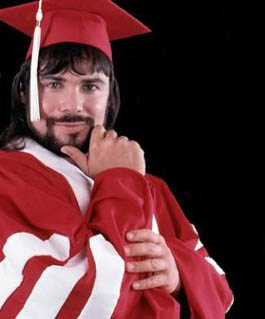
“The Genius” Lanny Poffo has a lesson or two to teach you!
There have also been those wrestlers who have come into promotions and been highly acknowledged for their athletic achievements at the collegiate and university levels.
Early in the 1930s as professional wrestling started to catch-on big time, Jumping Joe Savoldi was a big star at the University of Notre Dame in football before heading to wrestling, where the connection to the Fighting Irish continued.
Over the years, promoters would recruit right at the university wrestling meets, landing the likes of Don Curtis (Buffalo), Dick Beyer (Syracuse), Bill Miller (Ohio State), Jack and Jerry Brisco (Oklahoma State), and Verne Gagne (Minnesota) — to name a select few.
More recently, The Varsity Club was made up of Rick Steiner (Michigan) and Mike Rotunda (Syracuse) under coach Kevin Sullivan. Lately, a plethora of other college and university athletes have followed in the giant collegiate footsteps, names such as Brock Lesnar (Minnesota), Shelton Benjamin (Minnesota), Charlie Haas (Seton Hall) and Jack Swagger (Oklahoma), proving that education gimmicks are not only exclusive to academics, but athletics as well.
One way for a gimmick to be a success is for the person doing it to have some hands-on experience. Some may say an education after high school is essential to perform any kind of school-related gimmick. But there was no post-secondary education needed to make Lanny Poffo a genius.
The youngest son of wrestler Angelo Poffo prioritized wrestling over education right after high school. Poffo says his grades were always above average and he didn’t have to try all that hard. But his passion was wrestling. Little did he know at the time that his education would actually play a huge factor in the success of his wrestling career.
“My mother in particular was disappointed that I didn’t go to college,” Poffo said. “But I think college is for people who want to go. It’s not for people whose parents want them to go. I always wanted to be a wrestler.”
Poffo is also the brother of former WWE Champion Randy Savage, which is a fact that was never acknowledged in his professional career. It was actually Poffo’s gift for poetry that made him a household name in the WWE; a gift that Poffo discovered in, of all places, the classroom.
“I was in the 5th grade at the time and it was the second day of school. I had a beautiful teacher,” Poffo said. “I had heard that she wanted to see me after class and I was worried, because I thought I had done something wrong. So I go up to her and ask what she wanted to see me about, and she says, ‘Those two papers you wrote were just wonderful. You’re a great writer.’ It was the first time that anyone noticed me for anything but athletics. I’ve been writing ever since.”
When Poffo started with the WWE, he was known as Leaping Lanny, and at the time, the only thing he was recognized for were his breathtaking displays of athleticism. The only thing missing was a personality to accompany his in-ring skills. In June 1985, Poffo was a guest on the WWE’s version of The Tonight Show, called Tuesday Night Titans. On that night, Poffo added the final touch to his character.
“I was a guest on Tuesday Night Titans and I didn’t want to be boring. So I wrote a poem to read on the show and it made Vince very happy. He told me after the show that I would be reciting a poem before every match,” Poffo said. “I wanted to have as much going for me as I could. I wanted to be the gift that keeps on giving.”
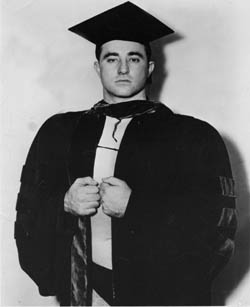
“The Professor” Roy Shire.
Despite the popularity of the poetry gimmick, Poffo certainly had roadblocks placed in front of him on occasion, just like anybody else. But he was able to overcome them and always kept the gimmick fresh and gave the fans something new each week.
“I went up to Chief Jay Strongbow one time and asked if he could let me know the name of my opponent in advance, so that I could have enough time to prepare a poem, and he refused. So I went and grabbed a list that named every wrestler on the roster and I would write a different poem for each guy, so I would be prepared no matter what. Sometimes, I’d even write generic poems, just in case,” Poffo said. “When I first started doing the gimmick, I was a babyface, and I was afraid that the fans were going to boo me. So I started writing poems on these scrolls and throwing them out to the audience. The scrolls didn’t go very far, so I then started writing poems on Frisbees, which were much more popular. One time I was wrestling Jake Roberts and there was only about 20 per cent of applause. As a babyface, some fans are going to boo, but as long as they don’t go to the popcorn stands during the poem, I’d know it was working. Some loved it, some hated it, but everybody respected it.”
Poffo then took the gimmick to a whole new level as a heel. He was able to enhance his character and give the audience a side of him that they had never seen before.
“There are always going to be a number of people who boo and a number of people who cheer, no matter what,” Poffo said. “As a heel, I would not only insult the wrestler that I was working that night, but occasionally, I would destroy the sports teams of every town that I was in, with my poetry.”
Lanny was not the only Poffo who found success as both a wrestler and an educator. His father Angelo was also a highly skilled in-ring technician, who became a teacher once his wrestling career came to an end. The transition from wrestling to teaching was a smooth one, because he wound up teaching something he knew quite a bit about.
“I was just getting older. I saved all my money and I was happy with the money I got,” the elder Poffo said. “Then I started teaching school in Chicago, physical education.”
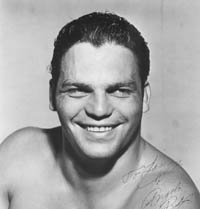
Angelo Poffo
A lot of wrestlers try to mimic the styles of their all-time favourites, while adding some of their own ingredients to it, and Angelo Poffo was no different. He patterned his style after another wrestling veteran named Professor Roy Shire, who would later be the promoter in San Francisco. Oddly enough, Shire also donned the cap and gown once, much like Angelo’s son Lanny. But he never claimed to be a genius; just a professor.
Like Angelo Poffo, Bob Roop is another man who was able to get an education in the ring, before he could give one in the classroom. He says intelligence is not measured by the level of education one has, but education is essential for someone who lacks the intelligence that he or she needs.
“Take Ronnie Garvin for example. Ronnie doesn’t have much of a formal education. He started in the business when he was 15 and was in the business for over 30 years, but he’s a smart guy,” Roop said. “An education and intelligence are two different things. I think for the guys who get into the business and are intelligent, not having an education won’t hurt them, because the road will teach them certain things. There are a bunch of things you can learn from being on the road if you’re intelligent. If you’re not intelligent, then an education will be very beneficial, because when those lessons come up on the road, you need some sort of criteria to be able to evaluate them and if you’re not intelligent, then you need an education, where someone else can tell you ‘you shouldn’t do this; you shouldn’t do that.’ I think for guys that are smart, the lack of a formal education is not a big deal. If me and Ronnie Garvin were to have a conversation, you wouldn’t be able to tell that he had any less formal education than I did.”
A wrestler becoming a teacher seems like a strange transition and doesn’t happen too often. But it seems these days that teachers who become wrestlers are a dime a dozen. Bill Eadie for one, was cracking open textbooks, before he ever cracked open a skull as Ax of Demolition. He still wrestles on the independent circuit today and continues his educational work with at-risk youths at Inner Harbour, a non-profit facility that treats troubled kids for a return to mainstream society. Newer fans will know the names Matt Striker and Michelle McCool, who were also school teachers, before getting into the wrestling business.
George Steele (Jim Myers) also went from teaching to the ring. He started as the masked Student in the Detroit area around 1962. The disguise helped him hide his real identity of local schoolteacher and coach. Steele’s shift to the pro ranks was financially motivated. “I made $4,300 a year teaching when I first started,” he recalled in a 2004 interview. “My first summer wrestling, I made $22,000.” He split his year into wrestling and teaching up until 1985, when he went into wrestling full-time.

Before he was “The Animal” Jim Myers was “The Student.” Courtesy of the Wrestling Revue Archives: www.wrestlingrevue.com
When most of those newer fans put the two words education and wrestling together, they think of a young man from Massachusetts, who was making a name for himself at Harvard, before he made a name for himself in the WWE. No, it’s not John Cena; it’s Chris Nowinski.
Nowinski was in the first season of WWE Tough Enough, and although he didn’t win, he was still able to make his mark on the WWE Universe as the only Harvard graduate in the history of the company, which is a fact that nobody enjoyed reminding fans, more than him.
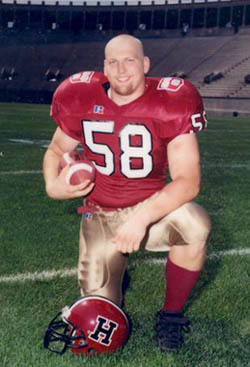
Chris Nowinski as a member of the Harvard Crimson football team. Courtesy of Chris Nowinski
“Wrestling was not a priority for me, until my senior year of university,” Nowinski said. “I had studied some theatre in school and played football, and I wasn’t excited about a desk job, so it was at that point that I started considering wrestling as an option. I was able to break into the business slowly at Killer Kowalski’s school and then of course, tried out for Tough Enough.”
Nowinski has had some of the toughest educators in the world at Harvard, but it still wasn’t enough to prepare him for the education he would receive in the WWE.
“The educators in the WWE and at Harvard were both the best in their field. Teaching’s teaching,” Nowinski said. “I never really heard too much negativity in my wrestling career because of my academic background. I’d only hear it if I messed something up. People would say ‘aren’t you supposed to be a Harvard graduate?'”
The WWE would emphasize Nowinski’s Harvard background at every opportunity. It was a gimmick that was not only original, but also legitimate. Nowinski graduated from Harvard’s sociology program and he himself would even occasionally use that education to his advantage. However, Nowkinski wasn’t the only Tough Enough alumnist who was known for his education. The winner of the first Tough Enough, Maven Huffman, was actually a 6th grade middle school teacher, before he became a wrestler.
Nowinski remembers one night in particular when he was in a hardcore match with his Tough Enough trainer Al Snow. The ring was filled with all kinds of random objects, including a skull, which can be found in any biology class, but it reminded Nowinski of the graveyard scene from Shakespeare’s Hamlet. During the match, Nowinski picked up the skull and began to recite lines from that very scene.
“I wish I could say it was all improv,” he said. “I didn’t know any of the lines off the top of my head. The idea just came to me when I saw the skull backstage and then decided to do some research and find that scene, so I could rehearse the lines before our match.”
Nowinski’s wrestling career didn’t last too long due to a concussion he received in the ring. But because of his education, Nowinski was well prepared for that. He was still an active participant behind the scenes at WWE and was a spokesperson for the company’s “Smackdown Your Vote” campaign. After the Benoit family double murder-suicide in 2007, Nowinski officially left the WWE and co-founded the Sports Legacy Institute which is dedicated to making people more aware of sports-related head injuries and also to increase the safety of contact and collision sports worldwide. He also serves as the Co-Directors of the Center for the Study of Traumatic Encephalopathy at Boston University School of Medicine.
According to Nowinski, education comes first. He says there are no guarantees of anything in wrestling, so it’s better to be safe than sorry.
“In this day and age, it would be crazy not to get an education,” Nowinksi said. “The success rate in wrestling is very low and the injury rate is very high.”
Roop agrees with Nowinski that there are never any guarantees of having a long career in the wrestling business, so the smart thing to do is save up as much as possible to enjoy life after wrestling.
“If wrestlers do not have the sense to save their money to make some sort of a business for themselves after wrestling, they’ll end up spending their money for as long as they can and then they finish up in their 40s or 50s and have no money and no trade. They don’t know how to do anything else,” Roop said. “I got to the end of a career that you’d think is never going to end. And I would have liked to have saved a lot more money. But I always thought that no matter what happens, I don’t care if I get out of the business broke, I still got my education and I still got a good mind. So no matter what happens, I’ll be able to make a living.”
— with files from Greg Oliver, Brian Elliott and Steven Johnson
